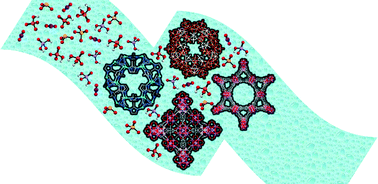Metal–organic frameworks for applications in remediation of oxyanion/cation-contaminated water
Abstract
Water pollution is an issue that should be carefully monitored and addressed. A major source of water pollution originates from high temperature industrial processes such as fossil fuel combustion and solid waste incineration. This waste typically contains high levels of oxyanion/cation forming elements which are particularly hazardous due to their inherent solubility in water and their resulting bioavailability. One approach for oxyanion/cation removal from water involves using an adsorbing medium to soak up and remove pollutants. Metal–organic frameworks (MOFs) offer an interesting platform for water remediation. MOFs are structurally diverse, porous materials that are constructed from metal nodes bridged by organic ligands. This highlight will focus on oxyanion/cation (PO43−, AsO43−, SeO32−, SeO42−, UO22+) removal from aqueous solutions using MOFs as contaminant-selective sponges. The mechanism of adsorption in different frameworks will be explored to gain insight into some design features that are important for MOFs to be used in applications to help alleviate water pollution.


 Please wait while we load your content...
Please wait while we load your content...